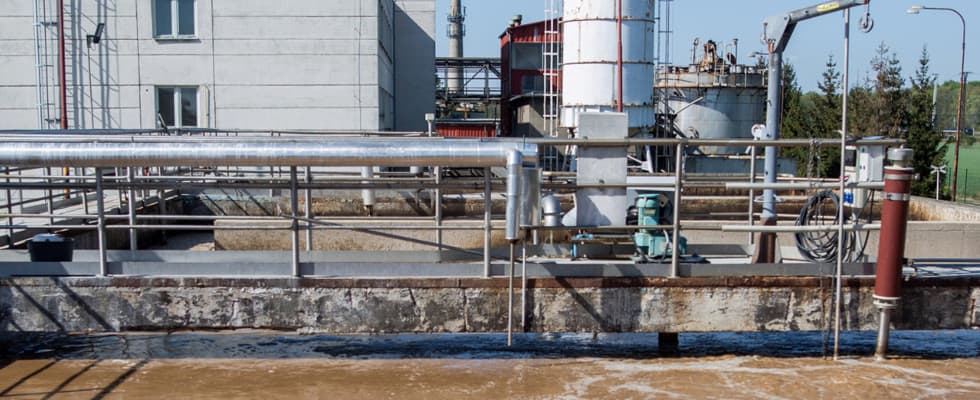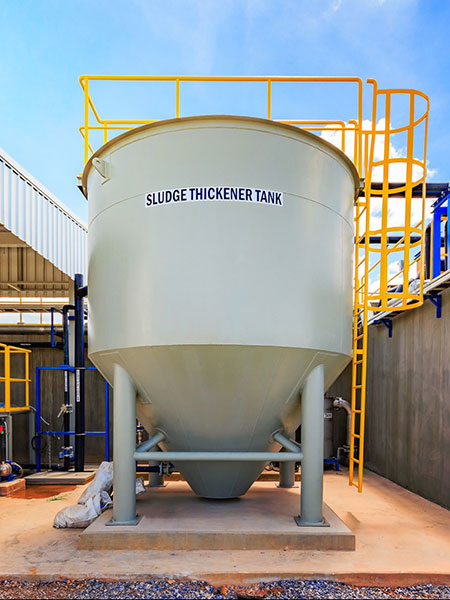
Wastewater management is a critical aspect of industrial operations, ensuring harmful pollutants are effectively removed before water is released back into the environment or reused. One pivotal component of this management process is industrial dewatering. This article delves into the concept of industrial dewatering of wastewater, its applications and the myriad benefits it provides across different sectors.
Industrial dewatering of wastewater refers to the process of removing excess water from sludge, a semi-solid byproduct generated during the wastewater treatment process. Sludge contains a mixture of water, organic matter and inorganic materials. Dewatering reduces the moisture content, resulting in a drier, more concentrated solid that is easier and more cost-effective to handle, transport and dispose of.

.jpg)
The dewatering process involves various methods, each suited to different types of sludge and operational requirements:
- Centrifugation: Centrifugation leverages the principles of centrifugal force to efficiently separate water from solids. This method is critical for reducing the volume of wastewater sludge, thereby facilitating easier handling, transportation and disposal.
- Belt filter press: A belt filter press is a continuous dewatering machine that uses a series of belts to apply pressure to the sludge, extracting water and producing a solid sludge cake. The system consists of two main belts: a gravity belt for initial dewatering and a pressure belt for further water removal through compression.
- Rotary vacuum drum filter: The rotary vacuum drum filter (RVDF) is a mechanical dewatering device that uses a rotating drum submerged in a slurry, where a vacuum is applied to separate solids from liquids. The drum is covered with a filter cloth that retains the solids while allowing the liquid to pass through, resulting in the formation of a filter cake on the drum’s surface.
- Screw press: A screw press is a type of mechanical dewatering equipment that utilizes a helical screw, or auger, to pressurize and compact sludge, forcing water out of the solids. The screw press is housed within a cylindrical drum with a perforated surface that allows water to escape while retaining the solid material.
- Geotextile bags: Geotextile bags, also known as geotextile dewatering bags or geobags, are a versatile and effective solution for dewatering wastewater sludge. These bags are made from permeable geotextile fabric that allows water to pass through while retaining solids, making them ideal for separating water from sludge and other waste materials.
Each method varies in efficiency, cost and suitability, depending on the specific characteristics of the sludge and the desired final moisture content.


Applications of Industrial Dewatering of Wastewater
Industrial dewatering of wastewater is integral to various sectors, each leveraging the process to address specific operational challenges and regulatory requirements.
- Municipal wastewater treatment: Municipal wastewater treatment plants generate large volumes of sludge as a byproduct of treating sewage and industrial effluents. Dewatering is crucial to reduce the volume of sludge, facilitating easier and more economical transportation and disposal. The dewatered sludge is often used in land application, composting or incineration, depending on its composition and regulatory compliance.
- Food and beverage industry: The food and beverage industry produces significant quantities of wastewater containing organic matter, fats and oils. Dewatering helps manage the organic sludge generated from wastewater treatment, reducing the volume and making it easier to handle. The dewatered sludge can often be repurposed for biogas production or used as a soil conditioner.
- Pulp and paper industry: In the pulp and paper industry, dewatering is essential for managing the high volumes of wastewater and the fibrous sludge produced. Efficient dewatering reduces the volume of sludge, lowering disposal costs and minimizing the environmental impact. The dewatered sludge can also be repurposed as raw material for other industries or used in land reclamation projects.
- Chemical and petrochemical industry: The chemical and petrochemical industries generate wastewater containing a variety of hazardous compounds. Dewatering these waste streams is critical for reducing the volume and toxicity of the sludge, making it safer and more cost-effective to dispose of or further treat. The dewatered sludge may contain valuable byproducts that can be recovered and reused.
- Mining and metallurgy: Mining and metallurgical operations produce large volumes of wastewater containing metal-laden sludge. Dewatering is essential for reducing the volume and weight of this sludge, facilitating safer and more economical disposal. In some cases, valuable metals can be recovered from the dewatered sludge, adding an economic incentive to the process.

Benefits of Industrial Dewatering of Wastewater
The benefits of industrial dewatering of wastewater are multifaceted, encompassing economic, environmental and operational advantages.
- Volume reduction and cost savings: One of the primary benefits of dewatering is the significant reduction in the volume of sludge. This reduction translates to lower transportation, storage and disposal costs. For industries producing large quantities of sludge, these cost savings can be substantial, making dewatering a highly cost-effective solution.
- Improved handling and storage: Dewatered sludge is much easier to handle and store compared to its liquid counterpart. Reduced moisture content means the sludge is less likely to leak, spill or cause operational hazards. This improves safety and efficiency in handling and storage operations, particularly in industries dealing with large volumes of sludge.
- Enhanced environmental compliance: Many industries are subject to stringent environmental regulations regarding wastewater management and sludge disposal. Dewatering helps industries comply with these regulations by reducing the volume and potential toxicity of the sludge, making it easier to meet disposal standards and minimize environmental impact.
- Resource recovery and sustainability: Dewatering facilitates the recovery of valuable resources from sludge. For example, in the food industry, dewatered sludge can be used to produce biogas, a renewable energy source. In the mining industry, metals can be recovered from the dewatered sludge, reducing the need for virgin materials and supporting sustainable practices.
- Reduction of environmental risks: By reducing the moisture content of sludge, dewatering minimizes the risk of environmental contamination from leachate, the liquid that can percolate through sludge and carry pollutants into soil and water sources. This is particularly important for industries dealing with hazardous or potentially harmful materials.
- Improved efficiency of further treatment processes: Dewatering sludge before further treatment processes, such as incineration or stabilization, improves the efficiency of these processes. For example, dewatered sludge requires less energy to incinerate compared to sludge with higher water content. This leads to lower operational costs and improved overall process efficiency.
- Minimized odor and pathogen control: Dewatering helps reduce the odor associated with sludge by lowering the moisture content and inhibiting the growth of odor-causing bacteria. This is particularly beneficial for industries where odor control is a significant concern, such as in municipal wastewater treatment. Additionally, dewatering can help control pathogens by reducing the moisture levels required for their survival and proliferation.
- Facilitation of beneficial reuse: Dewatered sludge often has characteristics that make it suitable for beneficial reuse. For example, sludge from wastewater treatment in agriculture can be used as a soil amendment, providing essential nutrients and improving soil structure. In the food industry, dewatered sludge can be repurposed as animal feed or used in biogas production, contributing to a circular economy.
By effectively reducing the moisture content of sludge, dewatering can provide cost savings, improve handling and disposal, enhance environmental compliance and support resource recovery and sustainability. As pressure increases to manage wastewater more efficiently and minimize environmental impact, dewatering will become even more vital.

